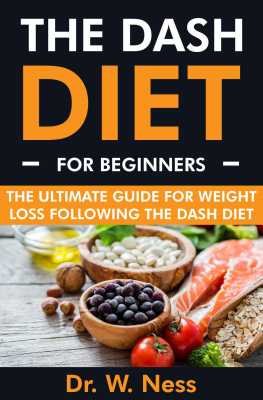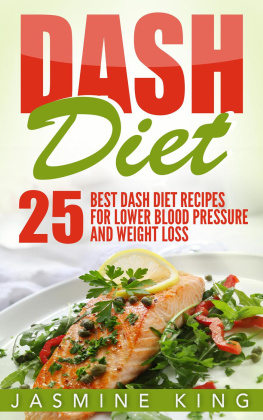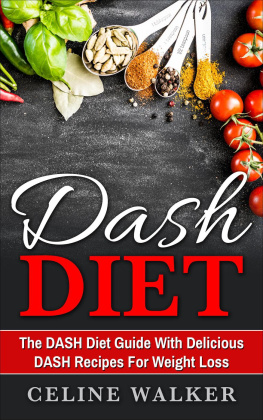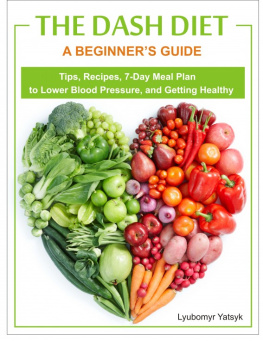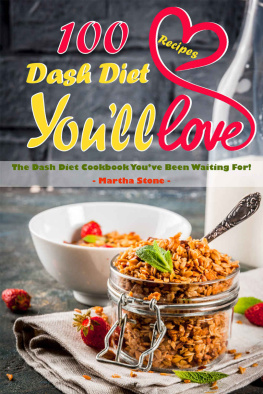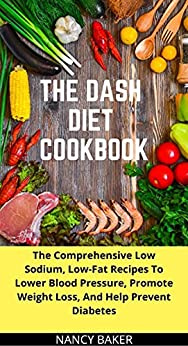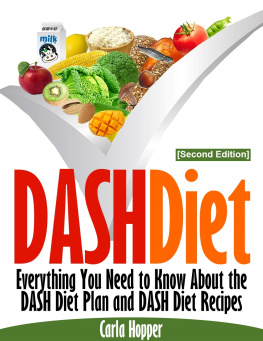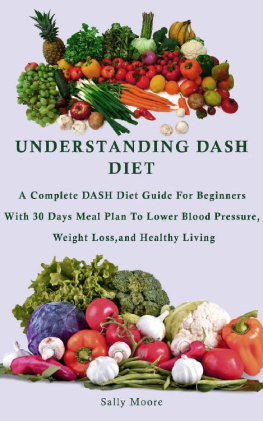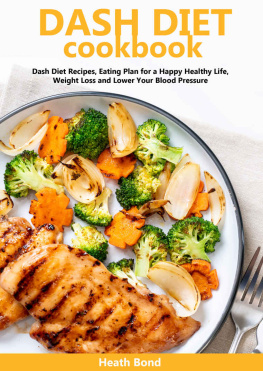Table of Contents
Healthy Diet Plan
DASH Diet and Grain Free Recipes
Alberta Ramos and Shirley Stokes
Copyright 2013 Alberta Ramos and Shirley Stokes
All rights reserved.
Introduction
What is a healthy diet plan anyway? It certainly is not a plan that includes any sort of junk food. The definition of junk food is food that has little to no nutritional value. In fact it may be safe to say that junk food is harmful to your health.
Harmful Side Effects of Junk Food
Junk food is not good for you. Period. If your diet consists mainly of junk food or even just portions you are at higher risk for the harmful side effects of consuming junk food. Harmful side effects include: weight gain, obesity, high blood pressure (hypertension), digestive issues, moodiness, depression, high cholesterol, heart disease, muscle and joint issues, and even a sluggish immune system.
Let's talk about the latter - a sluggish immune system. This is reason number one for most of the issues listed because if the immune system is weak it cannot sufficiently fight off infections. Infections can set in and we become sickly and weak. Our body cannot handle the food so it sticks around and forms into fat. Our digestive system becomes sluggish. We may have toxins build up as a result of that. How do we remedy this? With a diet change, of course.
Dieting Should Be a Lifestyle Change
When you go on a diet, you do so for health reasons. Or you may go on a diet for cosmetic reasons (to lose weight, to fit into "those" jeans, or that dress, or whatever the case may be. Some people may go on a diet for specific health reasons, such as to help lower high blood pressure. Regardless, if you find yourself in need of a diet whether it is to help you fit into smaller clothing or to help you resolve a health issue, you should consider it a permanent lifestyle change. Making it a permanent change will help to avoid the same pitfalls with your health. Going back to the original way you ate will only put your health right back where it was with weight gain, health issues, etc.
Succeeding with a New Diet
Both the DASH diet and the grain free diet plans offer healthy food choices. You will find if you stick with these diets, you will feel better and be much healthier for it. But to succeed you must go past the point of failure that so many others fall prey to when dieting. That is busting the junk food addiction. A food addiction is a tough and real addiction much like being addicted to alcohol or cigarettes. While you can stop suddenly and go on the diet and hope for success if you have a true addiction you will suffer from withdrawals, much like a person would if they are addicted to the alcohol and cigarettes. It helps to go through a weaning process. It helps to keep the withdrawal symptoms to a lower level and gives you a greater chance at success. Here are the steps to a proper weaning from junk food.
Withdrawals from junk food may include headaches, moodiness, lethargy or nervousness, lack of energy, and most certainly intense craving. These are very unpleasant and any of these will cause a person to want to give up on dieting just stopping the withdrawals. Weaning slowly helps to keep these symptoms manageable.
Take the weaning more slow to succeed. It takes the body about three weeks to break a habit. If you try to break it faster, you run the risk of failing with the diet. If you break the bad food habits before you start the diet you will have a greater chance at making the lifestyle change permanent. There are a couple of ways to break the bad food habits.
The first way is to take the full three weeks and slowly replace each time you wish to eat junk food with a healthier choice, such as a hand full of nuts or a piece of fresh fruit. It may be helpful if you keep a food journal for about a week so you know for sure how much junk food you eat. Every three days or so stop eating take away one instance of eating junk food and replace it with a nutritious snack. By the time you reach three weeks you will have completely weaned from all the junk food and should not have to face the unpleasant withdrawal symptoms. You may notice a craving once in a while, but your body will start to enjoy the more nutritious foods instead. You may reach a day where you will no longer care if you eat junk food or not.
Another way to wean from junk food is to do a set elimination of eating it. For the first five days allow yourself to eat junk food three times a day (for snacks or desserts). The next five days change it to eating junk food only two times a day. For the third five days only eat it once a day. For the fourth five days eat junk food once every other day. By the end of this you should be weaned. If you find you still have issues try to "reward" yourself once a weekend with "one" snack of junk food.
Choose whichever way you wish to wean from junk food. It is advisable to go ahead and go on the DASH and grain free diets while you are weaning, using the recipes to create snacks to replace the junk food.
Disclaimer
Always seek the advice and counsel of your own health care provider before starting any new diet routine. The amount of success derived from any diet plan depends on you, on what you do to follow the diet and how you stick with it. Of course, diet is further helped with a good exercise routine, so ask your health care provider about physical activity. Eating healthy may help to maintain healthy blood pressure levels, cholesterol levels, and a manageable healthy weight.
Section 1: DASH Diet
The DASH Diet is an important strategy for anyone who wants to lower their blood pressure and improve their overall health without dealing with risky medications and their side effects. This simple diet focuses on low fat, low cholesterol foods and natural ingredients, making it inexpensive and easy to follow. Plus, you'll be surprised by how delicious heart healthy foods can be. If you've been warned about the possible dangers of high blood pressure and a normal North American diet, it's time to make some changes.
The recipes contained in this book don't encompass the entire range of DASH diet options, but they will give you an idea of how you can change your favorite foods to fit the diet plan. In general, they focus on reducing the fat, cholesterol and refined carbohydrates in a dish without losing out on flavor. If you've experienced too many flavorless health foods, these recipes could be the solution that you've been hoping for.
What Is the DASH Diet?
DASH is a term that stands for Dietary Approaches to Stop Hypertension. It is designed to be a lifestyle change for people who want to treat or prevent hypertension, also known as high blood pressure. The diet is based on studies originally performed by the US National Institutes of Health that examined three different dietary plans and their effects on blood pressure. The result is a plan that focuses on increased consumption of plant foods such as nuts, beans, low fat dairy products, vegetables and fruit.
This diet plan is recommended by the National Heart, Lung and Blood Institute for anyone who wants to decrease their blood pressure and improve heart health. In studies performed on the diet, people who followed it showed a systolic blood pressure reduction of 6mm Hg, as well as a diastolic blood pressure reduction of 3 mm Hg in patients who had tested in the high-normal range, also called pre-hypertension. In patients who had existing hypertension, the diet caused reductions of 11 mm Hg and 6 mm Hg respectively, with no change in body weight. While it was not designed for weight loss, the DASH diet's focus on lower calorie, healthier foods does make it a viable choice for people who want to reduce their body fat levels.



